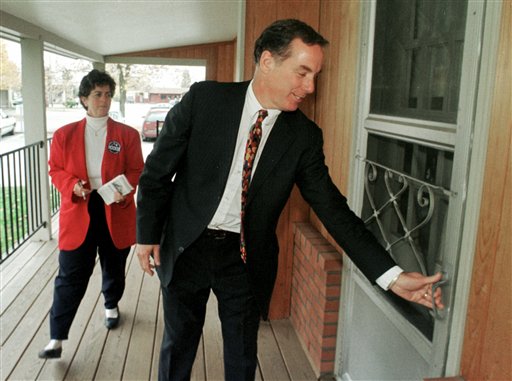In its first campaign finance decision since McConnell v. Federal Election Commission (2003), the Supreme Court in Randall v. Sorrell, 548 U.S. 230 (2006), overturned the stringent spending and contribution limits in Vermont’s campaign finance statute, stating that such limits violated the First Amendment.
Vermont severely limited campaign contributions, expenditures
The campaign regulation statute severely limited both the amounts that candidates for state office could spend on their campaigns and the amounts the individuals and political parties could contribute to those campaigns. These limits, according to the Court, were “the lowest in the Nation.”
With respect to campaign spending limits, the Court in a 6-3 decision authored by Justice Stephen G. Breyer upheld its earlier decision in Buckley v. Valeo (1976), which had struck down such limits. The Court rejected the argument that Buckley should be distinguished because it had not considered that expenditure limits would prevent candidates from spending too much time raising money rather than devoting that time to campaigning among ordinary voters.
Court said $200 campaign contribution limit was a danger to First Amendment free speech
The contribution limitation was a slightly more complicated issue for the Court, as such limitations had been consistently upheld since Buckley. However, in a fractured decision, which saw a total of four opinions issued by the six justices in the majority and two opinions for the three dissenting justices, the Court recognized that, if severe enough, contribution limits could cause more harm to protected First Amendment interests than their anticorruption objectives could justify.
If too low, those limits might raise “danger signs” that they are not “closely drawn to match a sufficiently important government interest” and might impose too much harm on political dialogue. When such danger signs exist, the Court indicated that it would apply a higher scrutiny than usually applied in such cases.
The most obvious danger sign was the dramatic difference between the Vermont limit ($200 to any candidate for state representative), which applied to contributions made both to candidates and to parties, and the $1,000 limit upheld in Buckley 30 years earlier. Pursuing this danger sign, the Court concluded that the limits would harm the electoral process by significantly restricting the financial ability of challengers to mount competitive campaigns against incumbents.
Court ruled Vermont law also threatened freedom of association
The Court also found that by requiring political parties to abide by the same limits that apply to individual contributors, the Vermont law threatened the important right of individuals to associate in a political party, as well as impeded a campaign’s ability to use volunteers. As the Court noted, the limits “would reduce the voice of political parties in Vermont to a whisper.”
The Court in Randall defined a point at which campaign finance reform could not go beyond. In decisions dating back to 2000, and particularly in McConnell, the Court had generally upheld most campaign finance regulations. Thus, prior to Randall, there was some question as to how far the Court would allow this regulatory urge.
This article was originally published in 2009. Patrick Garry, JD, PhD, is a professor of law at the University of South Dakota School of Law. Professor Garry’s books on the First Amendment include Scrambling For Protection: The New Media and the First Amendment, An American Paradox: Censorship in a Nation of Free Speech, and Limited Government and the Bill of Rights.

